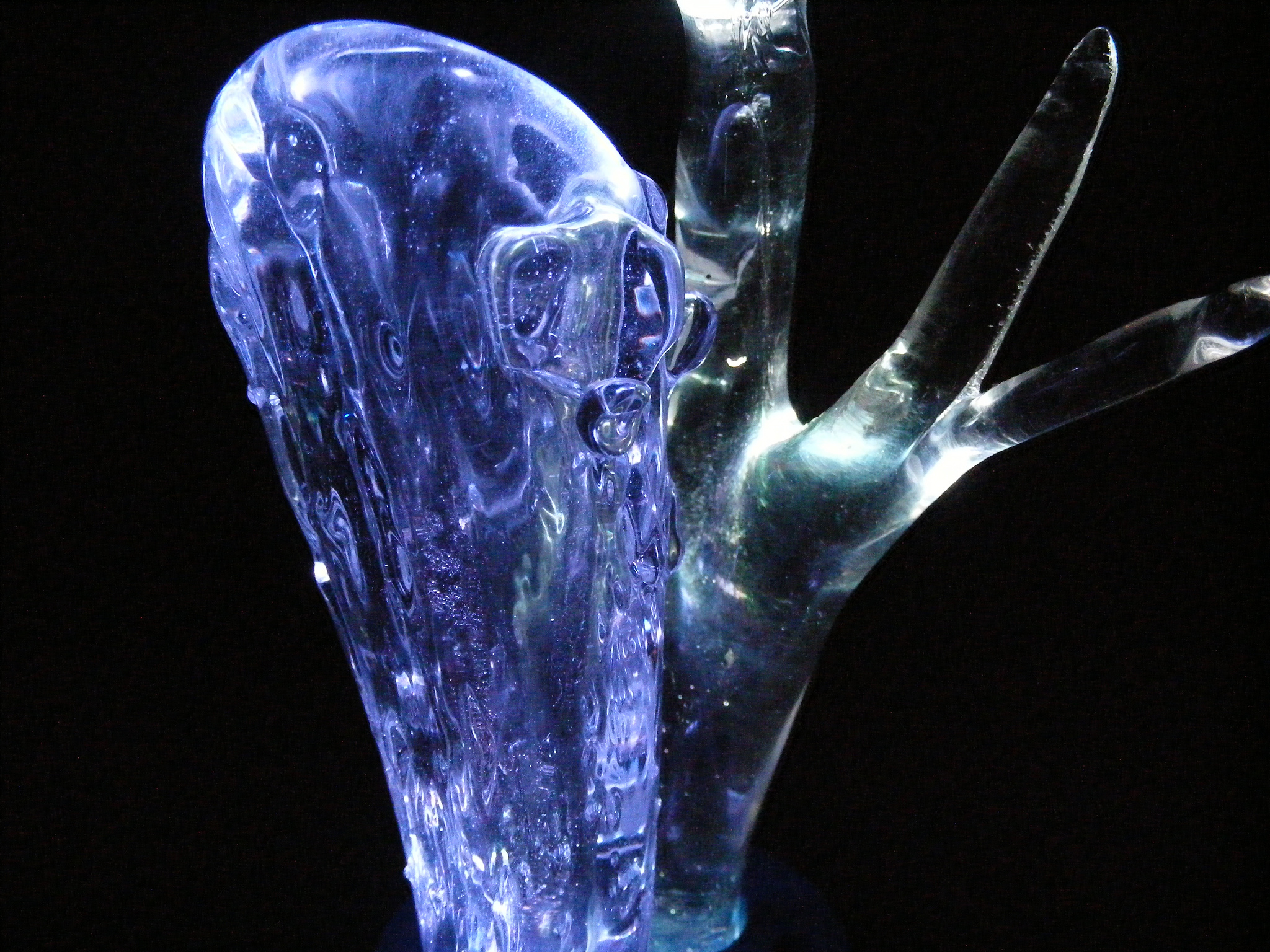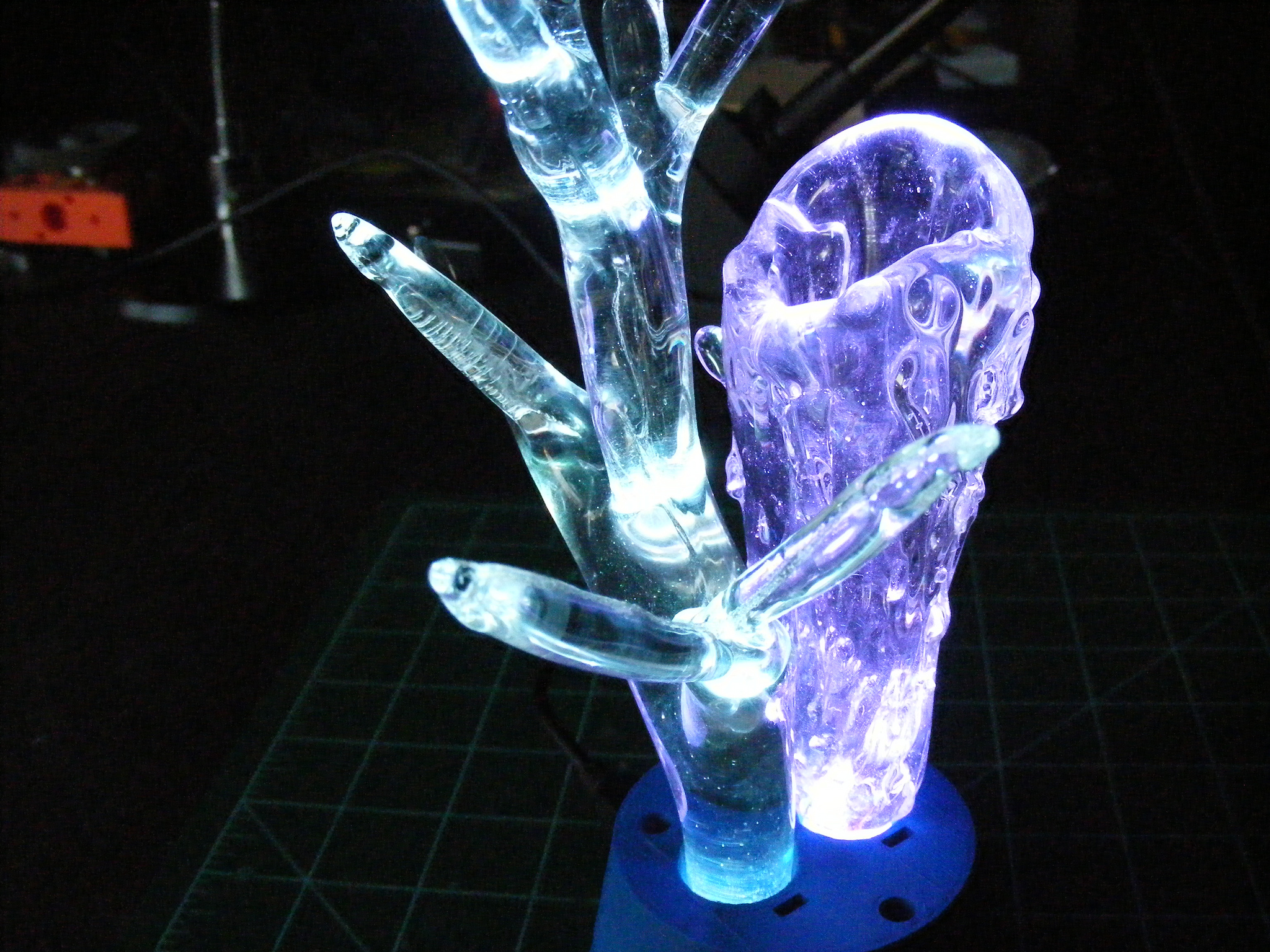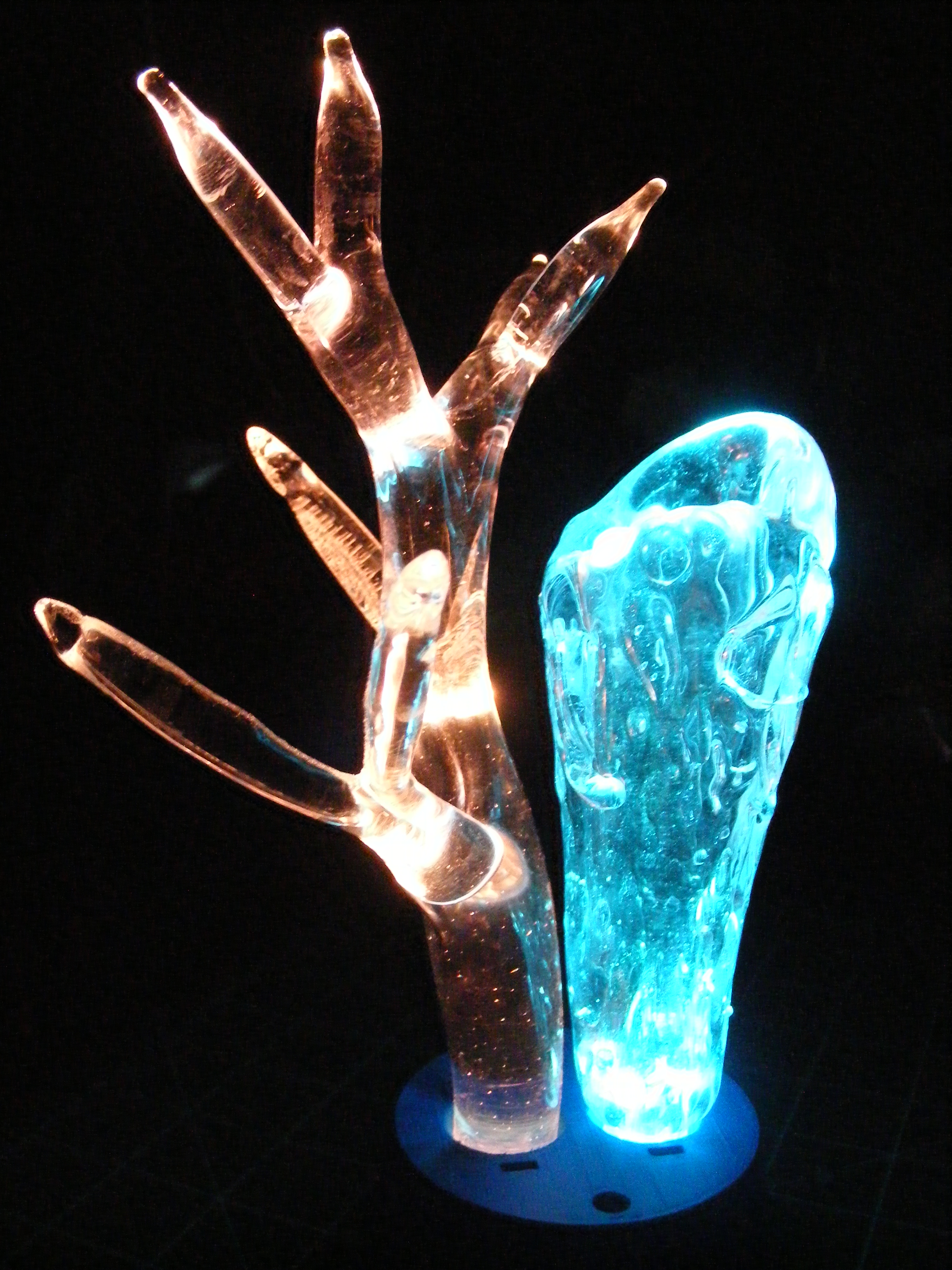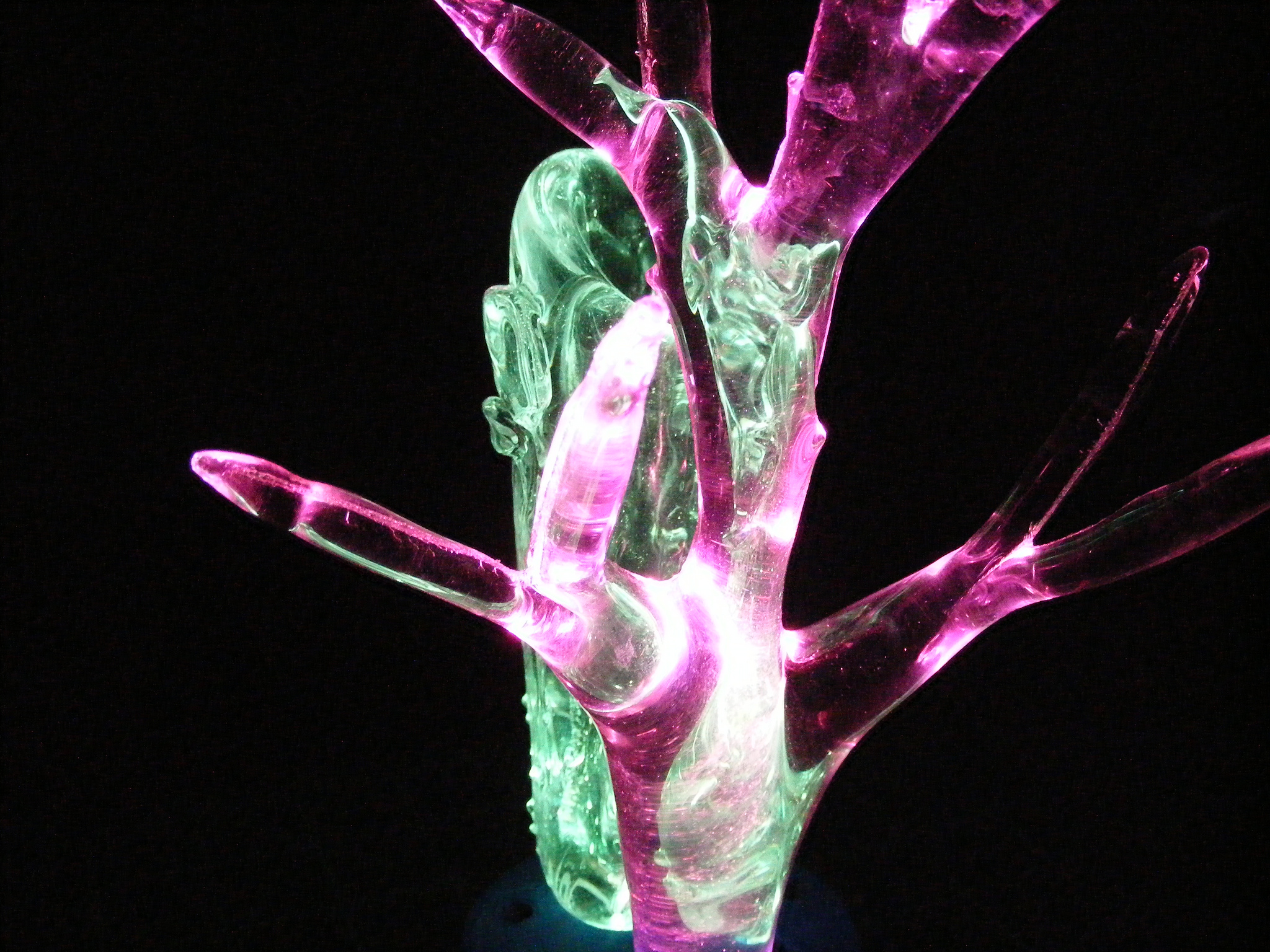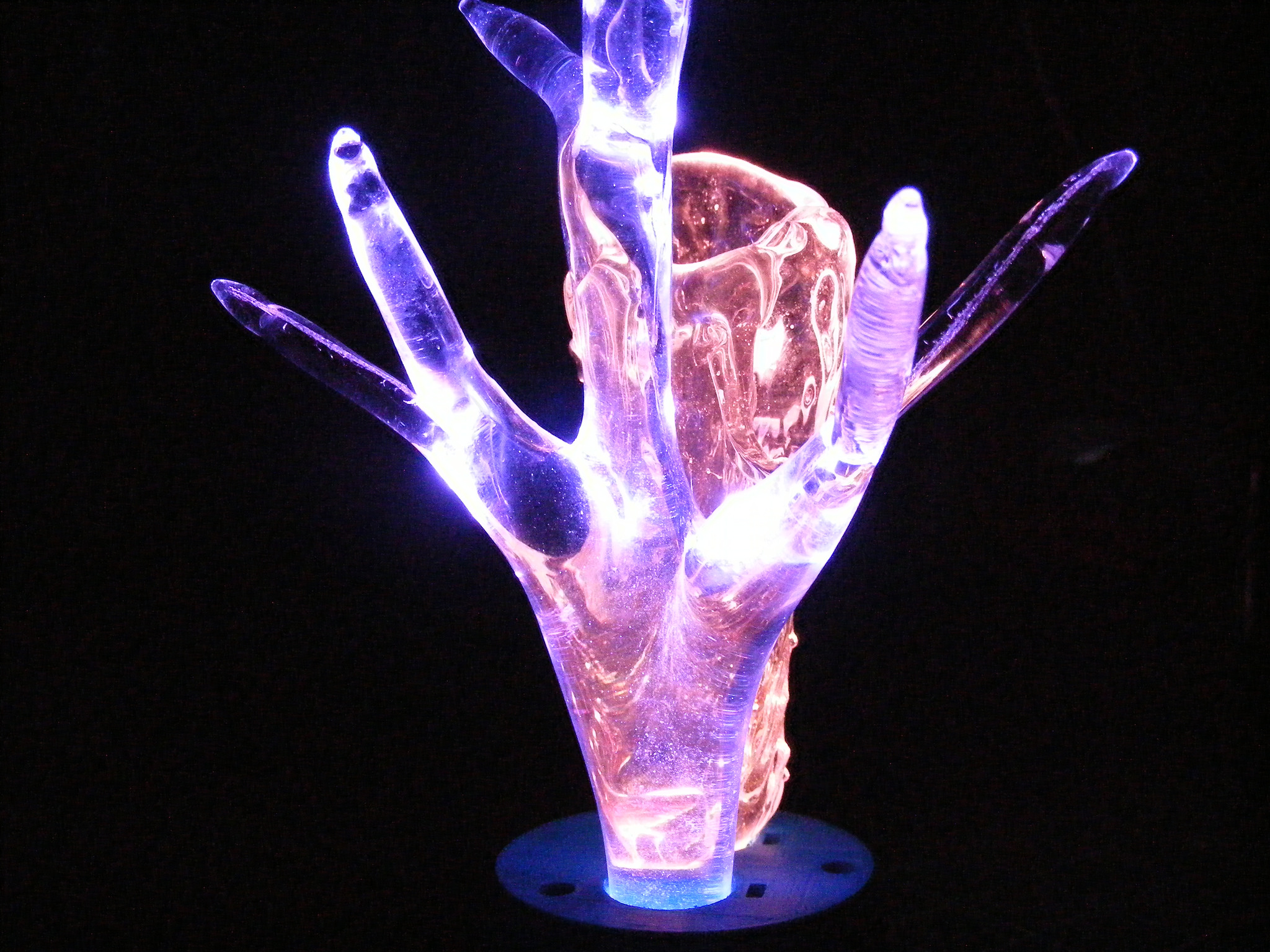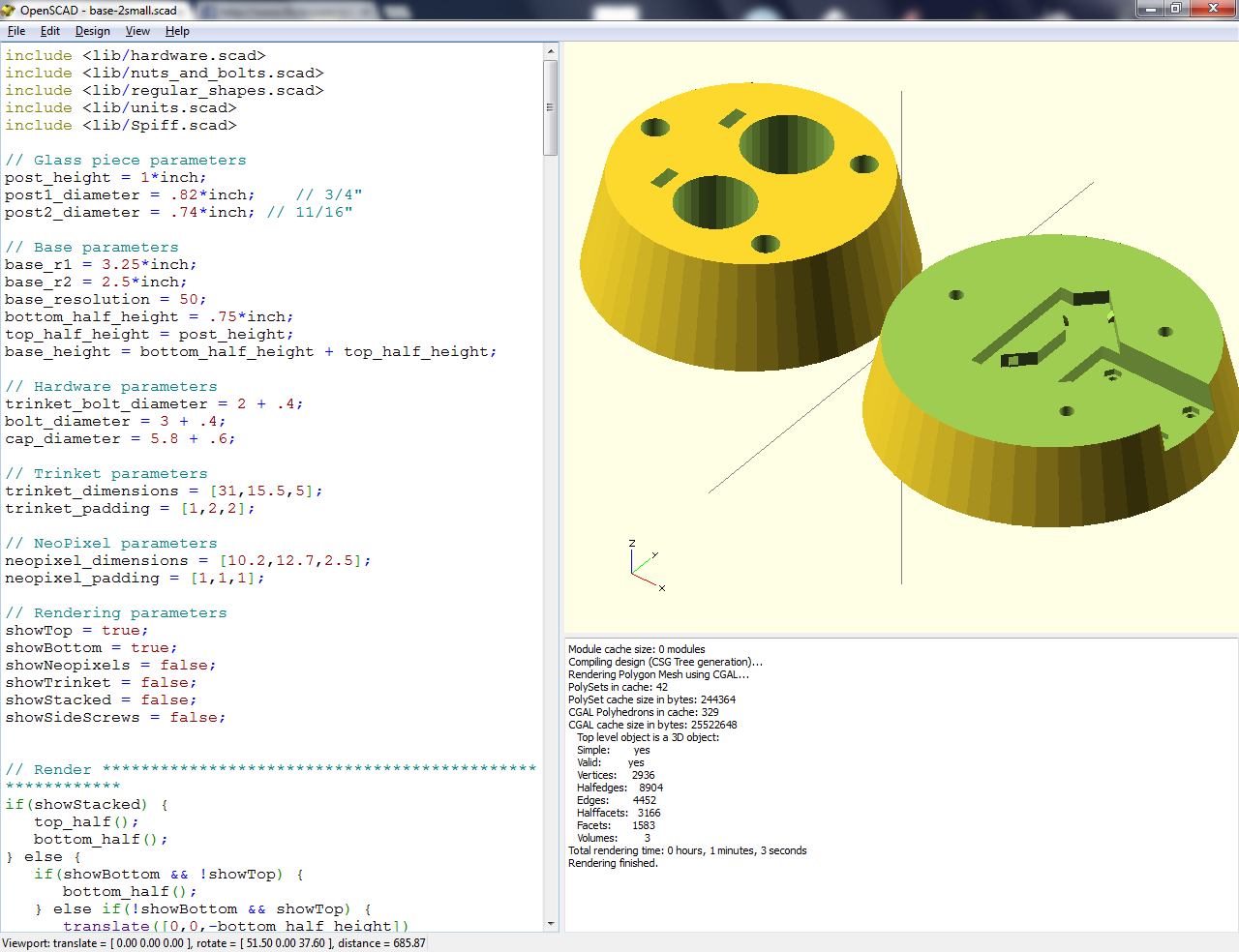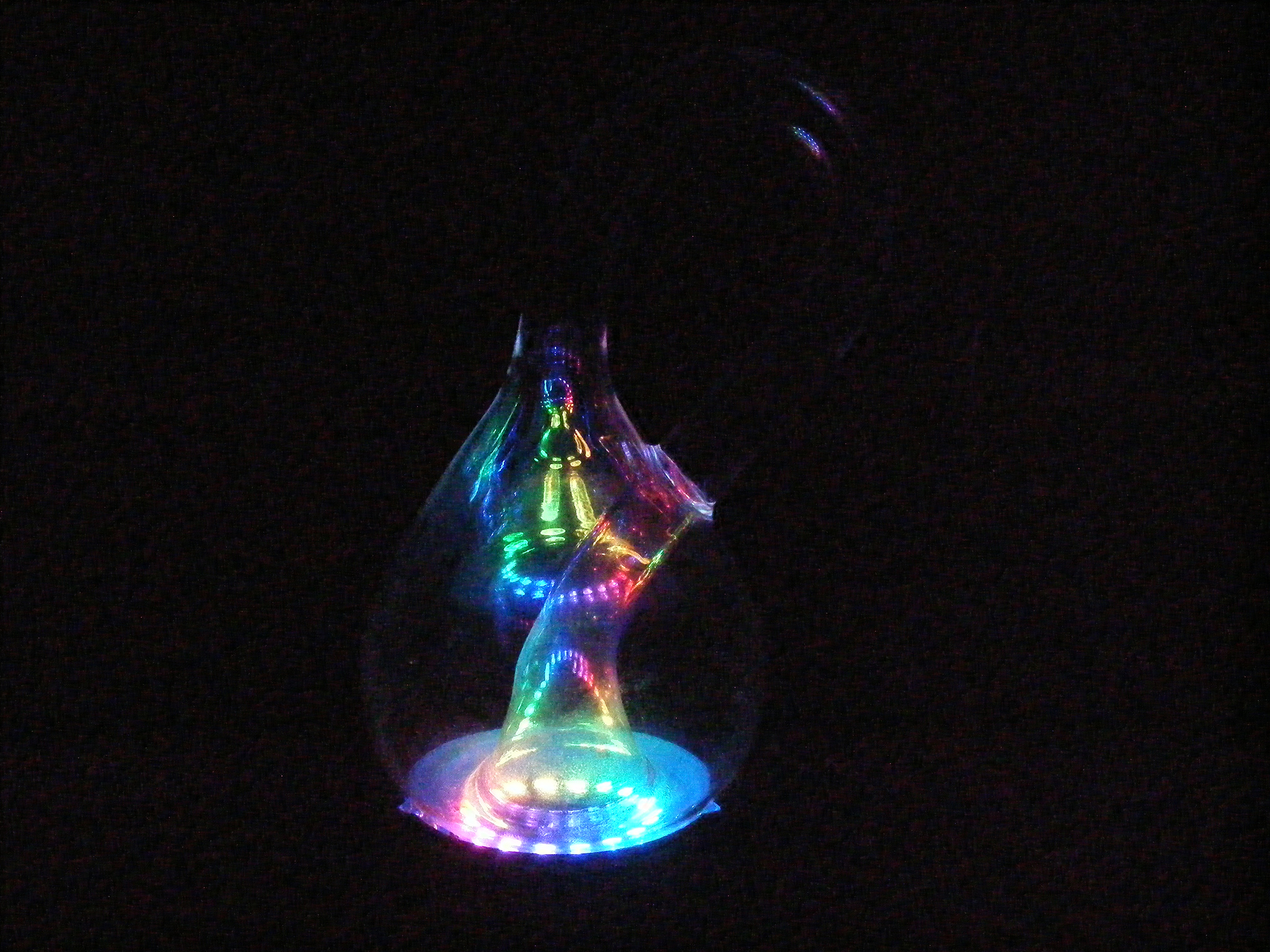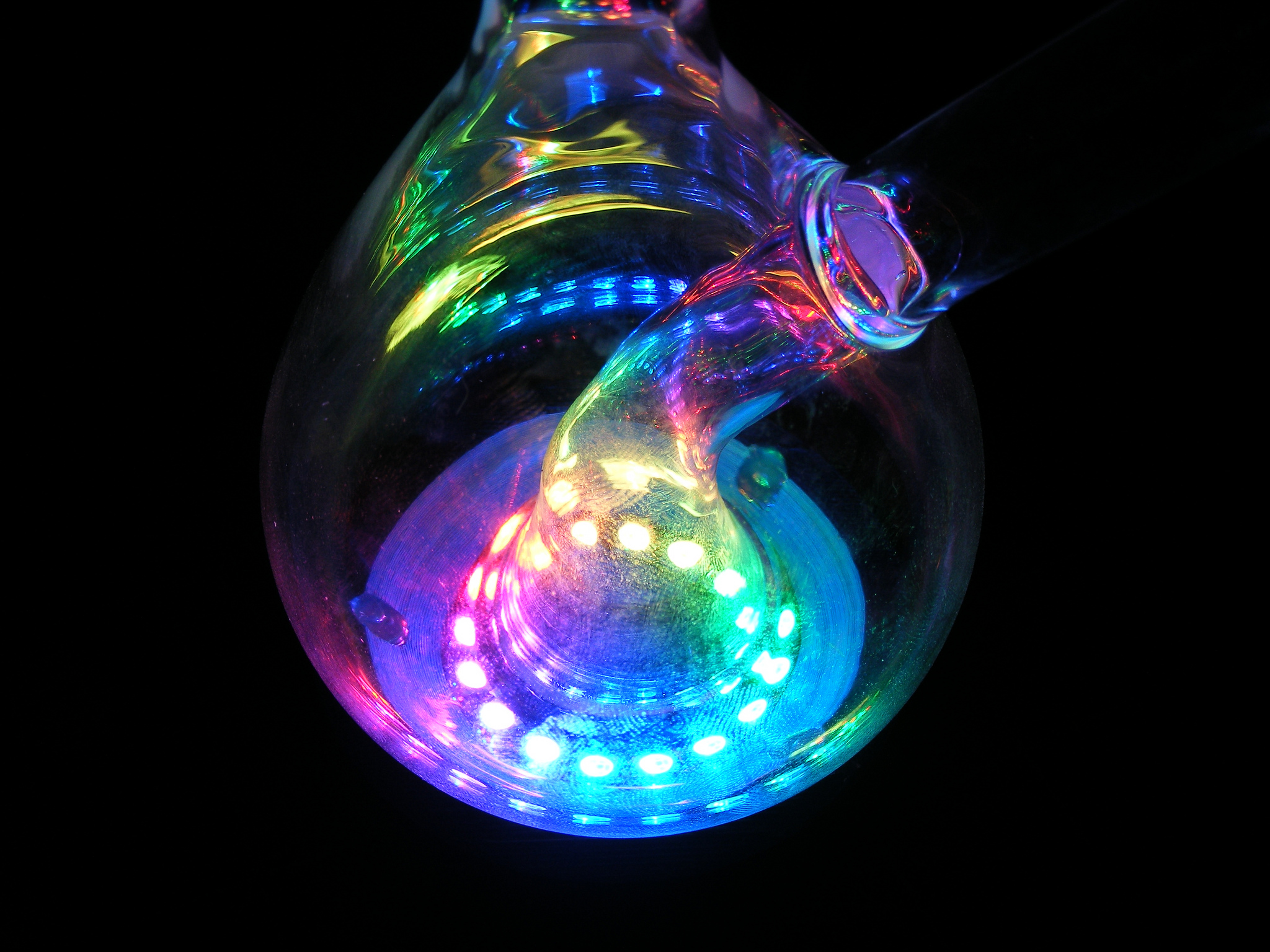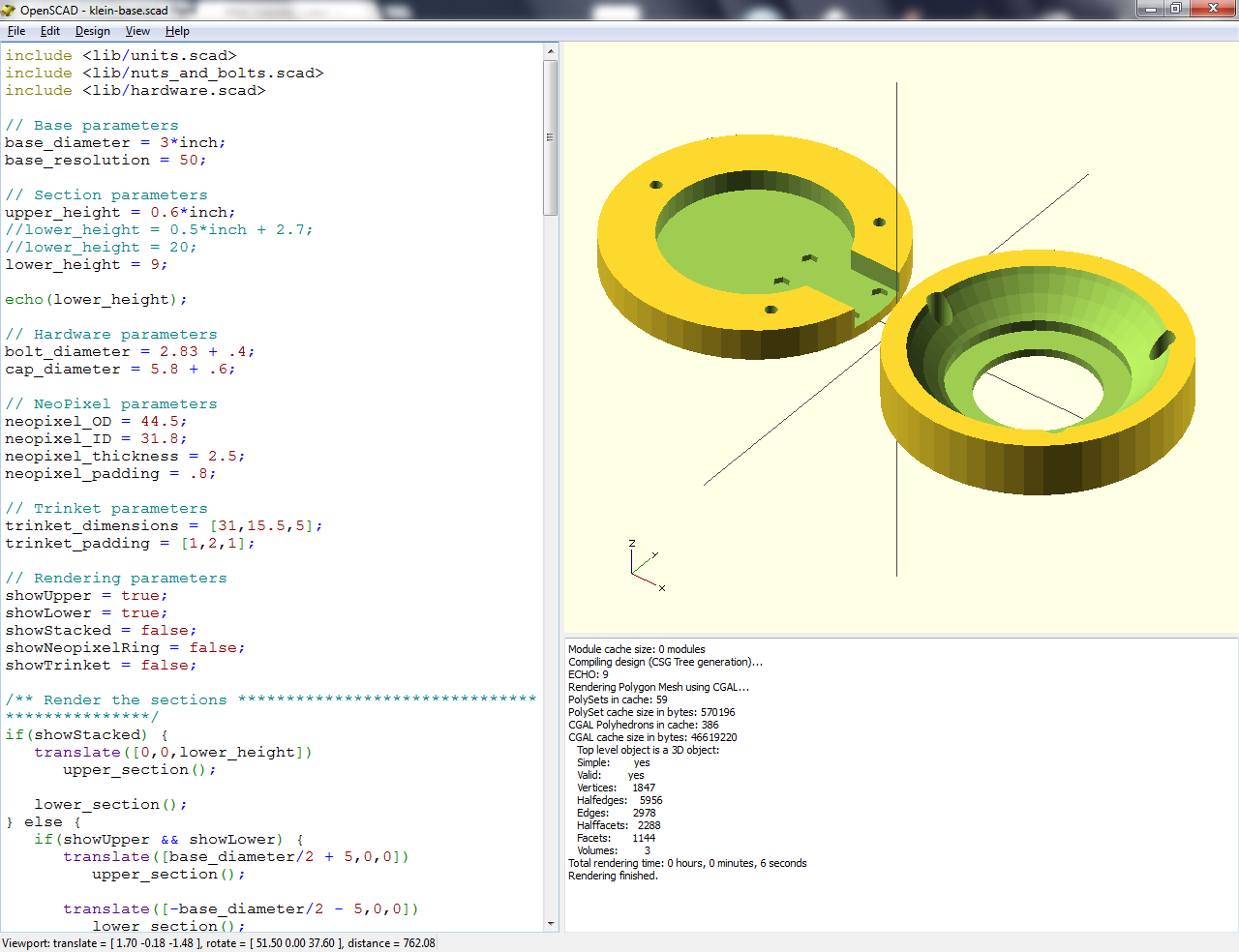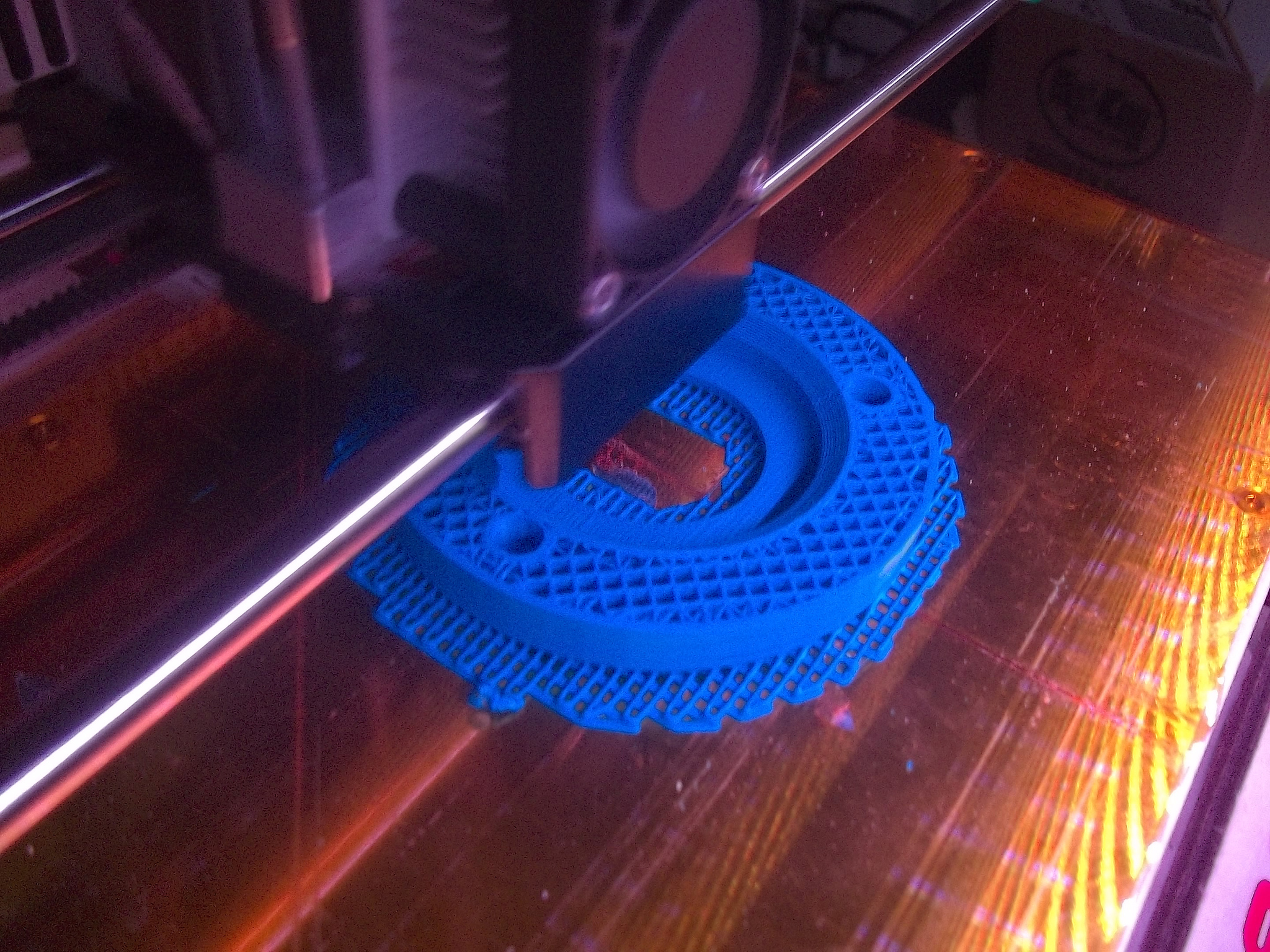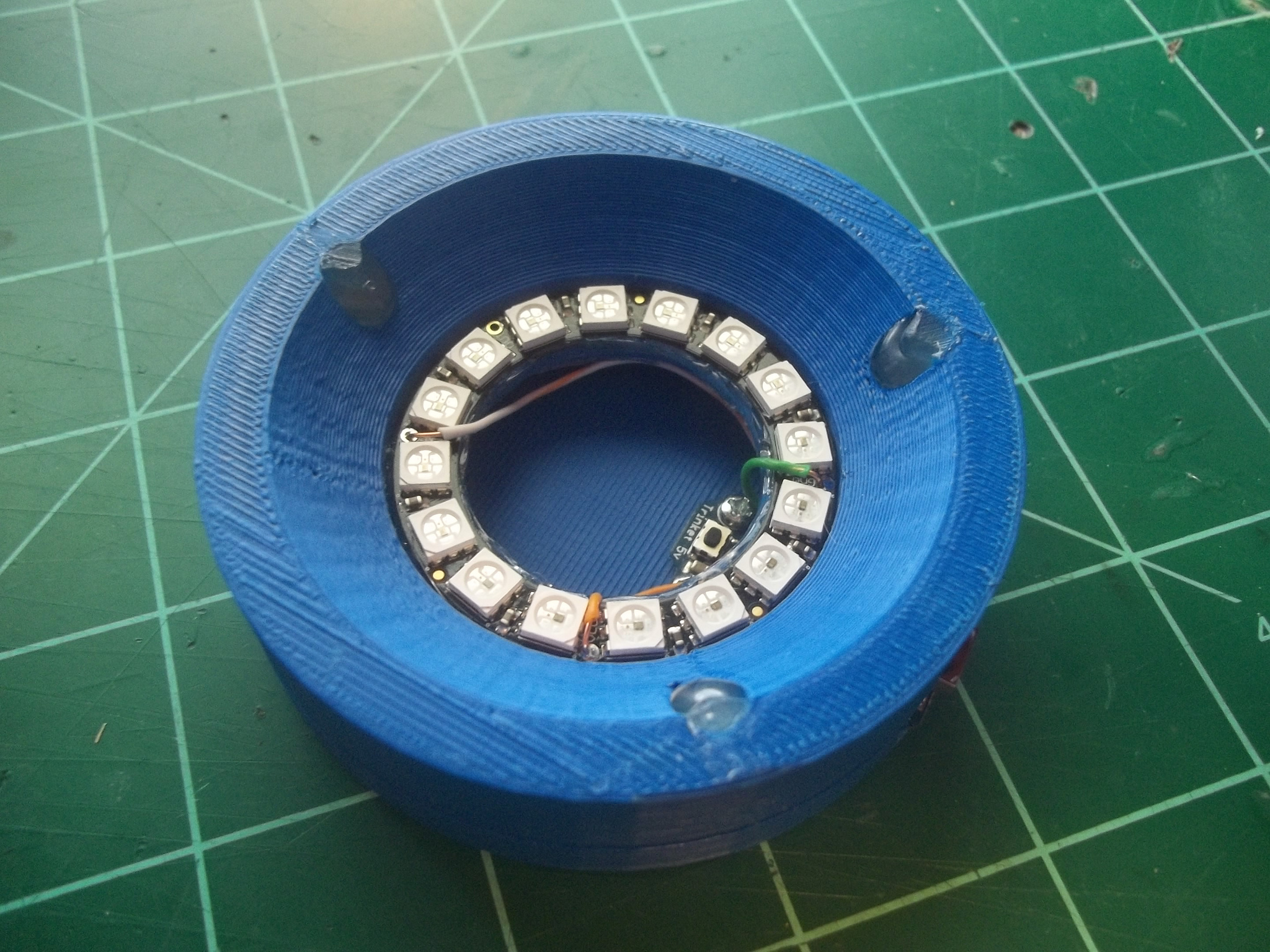Illuminated glass art commission and Klein bottle gift
For the holiday season I worked on two gifts that combine some neat lighting effects with some hand-made glass pieces. The first piece was created in collaboration with glassblower Kenny Galusha on commission for a friend as a Christmas gift, while the second piece uses similar electronics and a hand-made Klein bottle I found online.
Commissioned piece
While experimenting with some new glass pieces and lighting electronics, Kenny and I were approached about creating a Christmas gift that packaged things up in a nice case of some sort. Kenny created the clear glass forms (a small fractal tree and a “polyp”), while I created the 3D-printed base and wired up the electronics. Check out the result in the video below:
Making of Sheila’s commission
I used OpenSCAD to model a two-part base that includes snug holes for the glass pieces to fit into, as well as space to mount some lights and a microcontroller board. The base was printed on a Makerbot Replicator using some great filament I bought at a bargain from Printrbot.com (highly recommended!).
M3 grub screws are integrated into the top half of the base to secure the glass pieces further (though I’d like to find a better solution in the future).
The bottom half contains clips that hold two breadboard-friendly NeoPixels, as well as a Trinket and space to run wires. The mounting holes for the Trinket are very small (M2), which turned out to be pretty hard to work with. I tried to use captive nuts to mount the Trinket, but the holes were easily reamed out when just trying to thread the screws. Nonetheless, I was able to get two screws threaded pretty well, which is enough to the firmly hold the Trinket in place.
I uploaded some simple code that randomly cycles each of the NeoPixels through different colors, then used M3 screws to attach the two halves of the 3D printed base together. Here are some photos of the entire process:
Klein bottle Christmas gift
A while ago I was introduced to a maker of glass Klein bottles through a Tweet from @EMSL about engraving Klein bottles using their Eggbot spherical plotter. As soon as I found it I knew it would make a perfect Christmas gift for a certain glassblowing wizard I know, and realized I could make a 3D-printed platform for it to light it up nicely.
When I ordered the Klein bottle (from Acme Klein Bottles), I was expecting a typical, boring transaction (i.e., “Here’s my money” and “Here’s an automated e-mail with your tracking number” kind of thing). Instead what I got was a couple of personal e-mails from the owner of Acme Klein Bottles (the wonderful Clifford Stoll) with photos he took of the bottle in his garden, and a tracking number after he biked the Klein bottle to his local post office. That’s when I realized that I hadn’t ordered a commercialized “thing”, but a hand-made artifact that someone had spent a lot of time figuring out and personally making. This wasn’t a toy that had been popped out of an industrial mold by the thousands; this is a piece of Cliff Stoll and his company, and it has it’s own story and significance. Now that I understand that, I would happily pay double what I paid for it :)
Here is how it all turned out:
Making of Klein bottle gift
Just like the commissioned piece above, I modeled a two-part base in OpenSCAD and 3D-printed it on a Makerbot Replicator. The top half houses a 16 NeoPixel ring from Adafruit, while the bottom half houses a Trinket. A simple program cycles all of the NeoPixels through a rainbow effect.
The two halves are held together with M3 screws, and dabs of hot glue hold the bottle firmly in place to prevent it from falling over. Here’s what the process looked like:
Bonus: shown on Adafruit’s live “Show and Tell” Google+ Hangout!
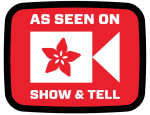 Every week Limor “ladyada” Fried and Phil Torrone from Adafruit host a live “show and tell” Google+ Hangout that anyone can join to talk about their projects, which is one of my favorite ways to share cool stuff I’m working on (albeit not as often as I’d like). I showed up last weekend and talked about some of this work, which is available for watching here (starting at about 7 minutes in):
Every week Limor “ladyada” Fried and Phil Torrone from Adafruit host a live “show and tell” Google+ Hangout that anyone can join to talk about their projects, which is one of my favorite ways to share cool stuff I’m working on (albeit not as often as I’d like). I showed up last weekend and talked about some of this work, which is available for watching here (starting at about 7 minutes in):
